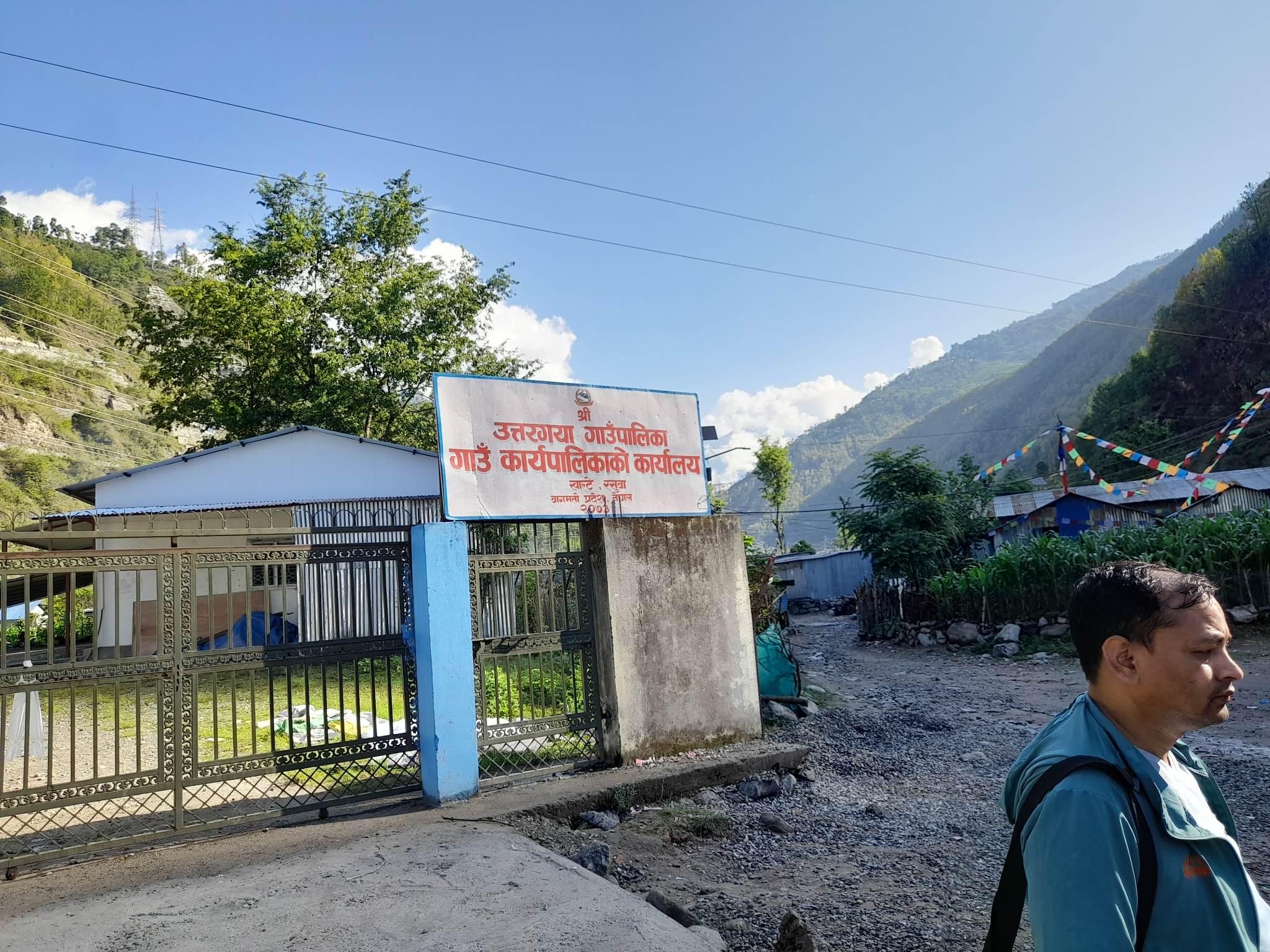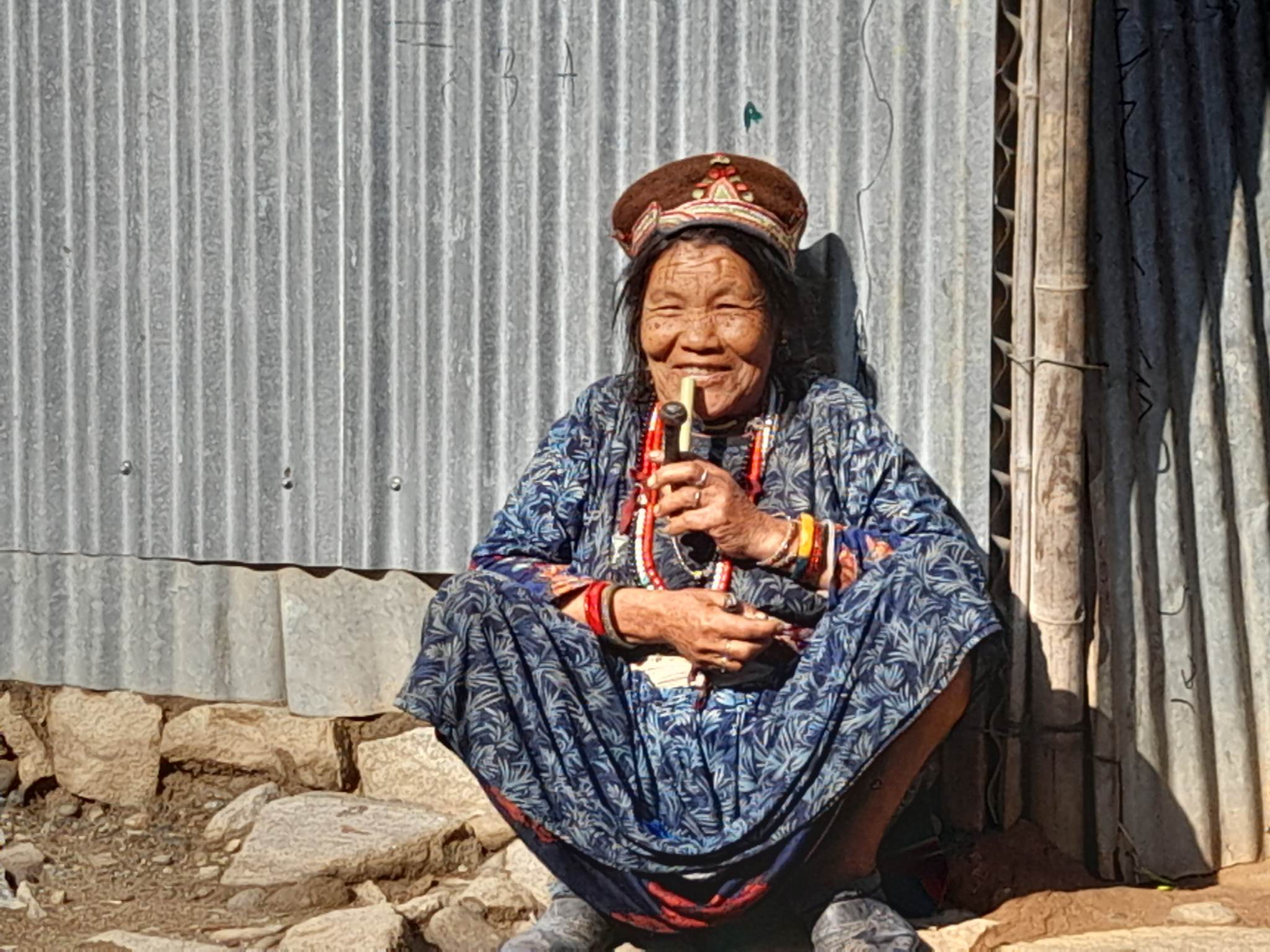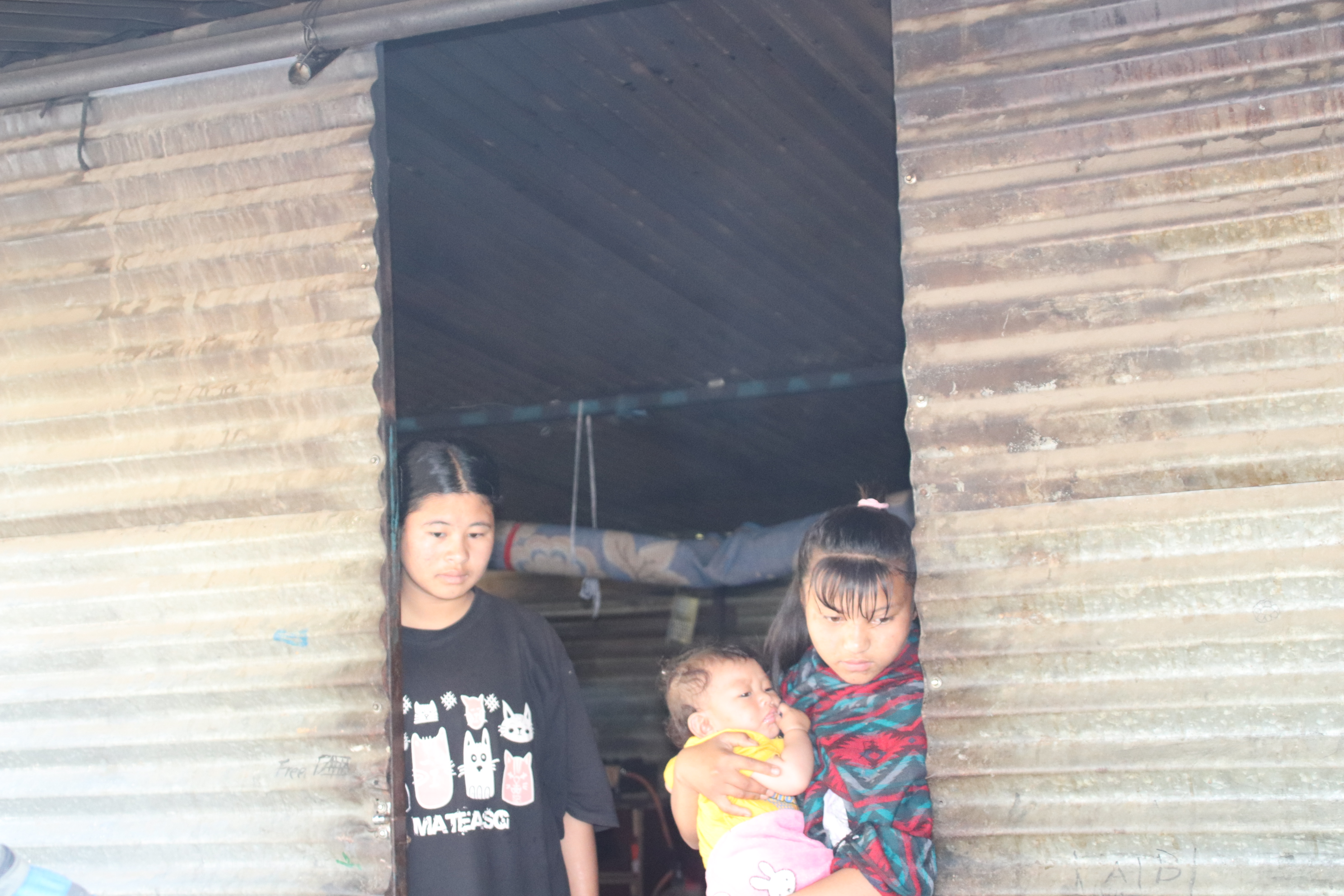Photo credit: CSRC
KHALTE, RASUWA, June 7: The National Reconstruction Authority (NRA), established with the sole purpose of rebuilding public as well as private houses destroyed by the 2015 earthquake, was dissolved over two years ago. However, it would be a terrible mistake to assume that every Nepali who lost their homes to the quake has a decent roof over their heads. Not very far away from the federal capital Kathmandu, in the mountainous district of Rasuwa, at least 699 households displaced from just one ward of a single rural municipality are living in very miserable conditions - a stark reminder of what the situation could be in the far flung areas of the country.

Photo credit: Akhilesh Tripathi
According to Bishwash Nepali, campaign officer at the Community Self Reliance Center, an organization working for land and agrarian rights, all these households were rendered homeless in just one ward of Uttargaya Rural Municipality. Displaced from villages like Tiru, Gogane, Mailung, Siruchet, Dandagaun, Khadku, and Karumaryang villages of Uttargaya- 1, many families are living on the banks of the Trishuli River in Khalte, Uttargaya Rural Municipality-5. All of them are the hardworking Tamangs who have been living in the district for centuries, challenging the challenge posed by the rugged mountains of this region.
45 pc Rasuwa quake victims set to get second tranche grant

“We were displaced from our ancestral place after the earthquake. Geologists concluded that that place was not inhabitable. So we came to this place on the riverbank and built a temporary settlement,” says Chheku Lama, coordinator of the local resettlement and construction committee,” We have drawn the government’s attention toward our plight many times. But the National Reconstruction Authority was dissolved without resolving our housing woes.”

Photo credit: Akhilesh Tripathi
Lama laments that the government which made housing arrangements for even the Bhutanese refugees has done too little to resolve their problems. “The place where we are living at present is not safe, either. While it is too hot here in summer, there is a risk of floods in the rainy season.” Lama adds that the displaced people did find a piece of land for their resettlement and Rs 40 million was allocated by the government for purchasing land but the with the dissolution of the NRA and after Janardan Sharma of the CPN (Maoist Center) became the finance minister, the allocated budget was scrapped. “We don’t know for how long we have to live on the riverbank.”
Both CEOs of the NRA – Govinda Raj Pokharel and Sushil Gyawali – and the then chief minister of Bagmati Province, Dor Mani Paudel and Maoist leader Barshaman Pun visited Khalte, promising decent housing to each displaced household. Also, the displaced people have knocked on the doors of Singha Durbar several times for the same purpose. “But we are still displaced,” says Lama.
Agrees Purna Bahadur Ghale, a people’s representative of ward no 1 of the rural municipality. “All politicians who visited us promised to build houses for each displaced household. But no one fulfilled their promises,” he says, “The country’s constitution guarantees food, shelter and clothing for every single Nepali. But I wonder when this will be implemented in practice.”
Photo credit: CSRC
Some of the displaced are living in the neighboring Nuwakot. “It’s been more than eight years since the earthquake but we are still displaced. The displaced cannot go back to their ancestral place because that has been declared a red zone. I, for one, pay Rs 3000 per month for the piece of land where I have built my current zinc-roofed home,” says Marshingh Tamang, chairman of Uttargaya-1. He too currently lives in Nuwakot.
(This news report is based on a field visit to Rasuwa that was sponsored by CSRC)


_20230607214653.JPG)





























